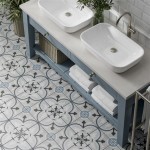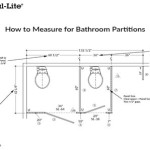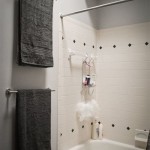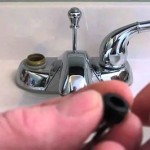Off White Bathroom Cabinet Ideas: A Guide to Timeless Elegance
The bathroom, often considered a sanctuary within the home, deserves careful consideration when it comes to design. Bathroom cabinets, in particular, play a crucial role not only in functionality but also in establishing the overall aesthetic of the space. Off-white bathroom cabinets offer a versatile and timeless appeal, blending seamlessly with various design styles and providing a calming and sophisticated atmosphere. This article will explore various off-white bathroom cabinet ideas, providing insights into design considerations, material choices, hardware options, and styling tips to create a bathroom that is both beautiful and functional.
Off-white encompasses a spectrum of hues, ranging from creamy vanilla to subtle beige, offering a nuanced alternative to stark white. This range allows for greater flexibility in matching existing fixtures, tile work, and wall colors. The softer tone of off-white helps to create a more inviting and less clinical feel in the bathroom, promoting a sense of relaxation and tranquility. Its neutrality also makes it an excellent backdrop for incorporating pops of color through accessories, artwork, and even the choice of countertops.
Understanding the Versatility of Off-White
Off-white's versatility is a significant advantage when designing a bathroom. It acts as a neutral canvas, accommodating a diverse range of design styles, from traditional and farmhouse to modern and minimalist. Its ability to complement various color palettes and material textures makes it a reliable choice for homeowners seeking a timeless and adaptable aesthetic.
In a traditional bathroom, off-white cabinets can be paired with ornate details, such as raised panel doors, antiqued hardware, and marble countertops. This creates a classic and elegant look that evokes a sense of history and refinement. For a farmhouse-inspired design, off-white cabinets can be combined with shiplap walls, rustic wood accents, and vintage-style fixtures. This combination creates a warm and inviting atmosphere that is reminiscent of rural living.
In a more modern or minimalist bathroom, off-white cabinets can be chosen with clean lines, a simple slab door design, and sleek hardware. This creates a streamlined and uncluttered look that emphasizes functionality and simplicity. The neutrality of off-white also allows for the incorporation of bolder design elements, such as a statement mirror or a vibrant accent wall, without overwhelming the space.
Furthermore, off-white works well with a variety of flooring options, from classic tile to contemporary concrete. It can also be paired with different countertop materials, including granite, quartz, and even wood. This adaptability makes off-white a particularly attractive choice for homeowners who are unsure of their long-term design preferences or who anticipate updating their bathroom in the future.
The specific shade of off-white can also be tailored to the overall aesthetic. A warmer, creamier off-white can create a cozier and more inviting atmosphere, while a cooler, more gray-toned off-white can provide a more sophisticated and contemporary feel. Considering the undertones of the chosen off-white in relation to other elements in the bathroom is crucial for achieving a cohesive and harmonious design.
Exploring Material Options for Off-White Cabinets
The material used for bathroom cabinets significantly impacts their durability, appearance, and cost. Several options are available, each with its own advantages and disadvantages. Selecting the right material is crucial for ensuring that the cabinets not only look beautiful but also withstand the humid environment of a bathroom.
Solid Wood:
Solid wood is a classic choice for bathroom cabinets, known for its durability, beauty, and natural warmth. It is resistant to warping and cracking when properly sealed and finished. Solid wood cabinets can be painted or stained in any shade of off-white, allowing for a customized look. Popular wood species for bathroom cabinets include maple, oak, and cherry.Plywood:
Plywood is an engineered wood product made from layers of wood veneer glued together. It is more resistant to warping and cracking than solid wood, making it a good choice for bathroom cabinets. Plywood can be painted or veneered with wood for a more upscale look. It is also a more affordable option than solid wood.MDF (Medium-Density Fiberboard):
MDF is another engineered wood product made from wood fibers, resin, and wax. It is a very stable and uniform material that is resistant to warping and cracking. MDF is often used for painted cabinets because it provides a smooth and consistent surface. It is also a more affordable option than solid wood or plywood. However, MDF is more susceptible to moisture damage than solid wood or plywood, so it is important to ensure that it is properly sealed and finished.Thermofoil:
Thermofoil is a vinyl laminate that is heat-bonded to MDF or particleboard. It is a durable and moisture-resistant material that is easy to clean. Thermofoil cabinets are available in a variety of colors and styles, including off-white. They are also a more affordable option than solid wood or plywood. However, thermofoil can be susceptible to chipping or peeling over time.Laminate:
Laminate is a synthetic material made from layers of paper and resin. It is a durable and moisture-resistant material that is easy to clean. Laminate cabinets are available in a variety of colors and styles, including off-white. They are also a more affordable option than solid wood or plywood. However, laminate can look less luxurious than solid wood or plywood.When choosing a material for off-white bathroom cabinets, it is important to consider the budget, aesthetic preferences, and the level of moisture in the bathroom. Solid wood and plywood are generally considered to be the most durable and luxurious options, while MDF, thermofoil, and laminate are more affordable choices.
Hardware and Styling Considerations for Off-White Cabinets
The hardware chosen for off-white bathroom cabinets can significantly impact the overall aesthetic of the space. Hardware includes knobs, pulls, hinges, and other decorative elements. Selecting hardware that complements the cabinet style and the overall bathroom design is essential for creating a cohesive and visually appealing look.
For traditional off-white cabinets, antique brass or oil-rubbed bronze hardware can add a touch of elegance and sophistication. These finishes pair well with raised panel doors and ornate details. For a farmhouse-inspired bathroom, matte black or brushed nickel hardware can create a more rustic and understated look. These finishes complement shiplap walls and vintage-style fixtures.
In a modern or minimalist bathroom, sleek and simple hardware in chrome, stainless steel, or brushed nickel can enhance the clean lines and uncluttered aesthetic. These finishes pair well with slab door designs and minimalist fixtures. Consider the size and shape of the hardware in relation to the cabinet doors and drawers. Larger pulls can make a statement, while smaller knobs can create a more subtle look.
Beyond hardware, styling the bathroom around off-white cabinets involves considering countertops, backsplashes, and accessories. Countertops in materials like marble, quartz, or granite can complement the cabinets and add a touch of luxury. A backsplash in a coordinating color or pattern can add visual interest to the space. Consider using natural stone, glass tile, or ceramic tile for the backsplash.
Accessories such as towels, soap dispensers, and decorative items can add personality and warmth to the bathroom. Choose accessories in colors and textures that complement the cabinets and the overall design style. Plants can also add a touch of life and freshness to the space. Consider using succulents, ferns, or other low-maintenance plants that thrive in humid environments.
Lighting is also a crucial consideration. Proper lighting can enhance the beauty of the off-white cabinets and create a more inviting atmosphere. Consider using a combination of ambient, task, and accent lighting to create a well-lit and functional bathroom. Undercabinet lighting can highlight the texture and color of the cabinets, while recessed lighting can provide general illumination. A statement light fixture above the vanity can add a touch of style and personality.
Finally, maintaining the cleanliness of off-white bathroom cabinets is essential for preserving their beauty and longevity. Regularly wiping down the cabinets with a damp cloth can remove dust and dirt. Avoid using harsh chemicals or abrasive cleaners, as these can damage the finish. For stubborn stains, use a mild detergent and a soft cloth. By following these simple maintenance tips, the off-white bathroom cabinets can remain a beautiful and functional part of the bathroom for years to come.

Off White Bathroom Cabinets Homecrest Cabinetry

Traditional Glazed Off White Bathroom Vanity Atlanta By Schrocks Of Walnut Creek Houzz

Off White Bathroom Paint Color Design Ideas

Off White Bathroom Cabinets Transitional Style At Home

Off White Bathroom Cabinets Homecrest Cabinetry

Off White Quartz Bathroom Countertops Design Ideas

25 White Bathroom Ideas For A Simple And Stylish Space

5 Off White Bathroom With Beige Walls Design Ideas Images

Off White Vanity Cottage Bathroom A Pyke

Off White Double Bathroom Vanity Design Ideas
Related Posts







